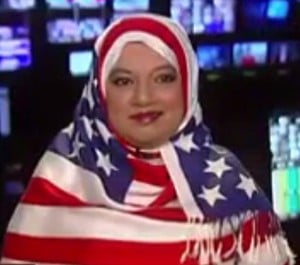It’s hard not to judge a book by its cover, or in this case, an article by its headline, when the first words that scream out at you are: From bikinis to burkas: A Yemeni memoir.
If your first thought is, “Not again. Haven’t we been down this cliché-littered road before?” then you’re not alone.
But since Yemen is the latest Muslim-majority country to grace the headlines of nearly every recent newspaper article and television broadcast, it was almost inevitable that the world would soon be privy to an article like the one published in Canada’s daily Globe and Mail newspaper, by Yemen-born, Toronto-based professor and writer Kamal Al-Solaylee.
I’m sure you’re familiar with the formula already. Find a Western-based intellectual who is disillusioned with his or her childhood upbringing in the big bad Muslim country du jour, encourage him or her to write a tell-all exclusive on how backwards and primitive said upbringing was, add a sensational headline pitting the “Western world” against the “Muslim world”, and voila – you’re on your way to a crowd-pleasing piece in which a lucrative book deal can’t be too far behind.
The premise of the article is clear. The writer attempts to explain how his former homeland, once “secular and cosmopolitan” lost the war with extremism and “turned its back on social progress and intellectual freedom” – a premise he tries to articulate by describing how the same phenomenon happened to his family.
Al-Solaylee laments the Yemen of old when his “secular” family could live in peace and security under the British, Yemen’s former colonizers. But soon that “security was rocked by guerrilla uprisings in the mid-1960s,” which led the writer’s family into exile in Lebanon and Egypt.
Despite the turmoil, Al-Solaylee recalls with fondness his days of frolicking on the beach with his sisters, helping them pick out bikinis – all evidence somehow of how “enlightened” and “progressive” they were.
But when the family moves back to Yemen 15 years later, it is a place the author says he can barely recognize and prompts him to leave for the U.K. to pursue his studies before eventually migrating to Canada.
It is on his periodic return trips to Yemen to visit his family that he begins to see how “dramatically” they have changed and how they have “embraced hard-line interpretations of Islam.” What Al-Solaylee fails to make clear is his evidence for how his family’s changes equate to “losing the war against extremism.”
He says, “Returning again in the summer of 2001 – my first visit since I had moved to Canada in 1996 – I encountered a family that was a lot closer to the stereotype of regressive Muslim culture than I had ever known.”
But to back up such a claim, he describes three incidents:
“The veils were in full view. Everybody prayed five times a day. My brothers were unapologetically sexist in their dealings with their wives.”
The latter example has nothing to do with Islam, and it is unfortunate that the writer chooses to link his brothers’ sexist views to their religion. But even more disheartening is his equation of praying and wearing a scarf to extremism.
He says women in Yemen are also now expected to cover their heads and wear the burqa in public.
Al-Solaylee goes on to say: “The rare times I look at them, I see only a family that has betrayed its secular, intellectual history and has either chosen or been forced to accept intolerance instead.”
What connection do prayer and wearing a veil have with intolerance? What is his definition of extremism? Does increased religiosity necessarily mean extremist views? Al-Solaylee misses a chance to expound upon those questions, and instead chooses to hand the reader the trite equation of “bikini equals good, veil equals bad.”
The one example that might have helped corroborate Al-Solaylee’s premise was the anecdote about a brother who suggested that his eldest daughter need not go to college because an education wouldn’t help her as a housewife. But even that was simply glossed over without a mention of any possible nuances to his brother’s suggestion – especially in a family where some of the other women attended university.
Also absent was any mention of an attempt by the writer to engage his family and try to understand why they seemed to have moved away from their secular values. If they were once intellectual, forward-thinking people, what turned them into religious drones, as the author would have us believe?
It’s feasible to imagine that a woman might wear a burqa outdoors if everyone else is doing so, and the prevailing society demands it. But who prays five times a day in the privacy of their own homes if they don’t really want to?
If in the end, all Al-Solaylee can see is “a family that has betrayed its secular, intellectual history”, then it makes sense that he fails to respect or attempt to understand the purpose behind their behavior. It’s just too bad that the general public has to be subjected to another clichéd article in the meantime.











